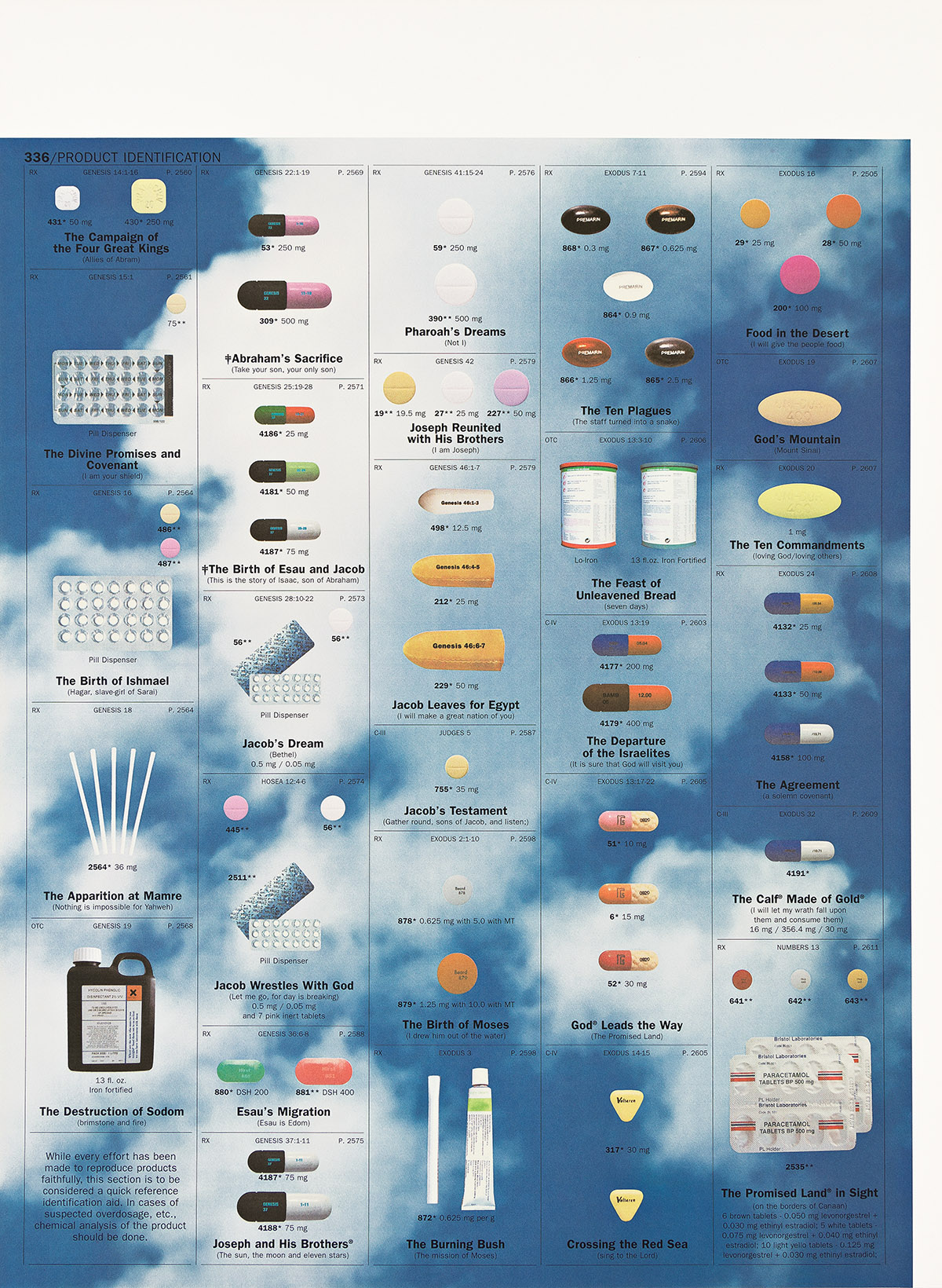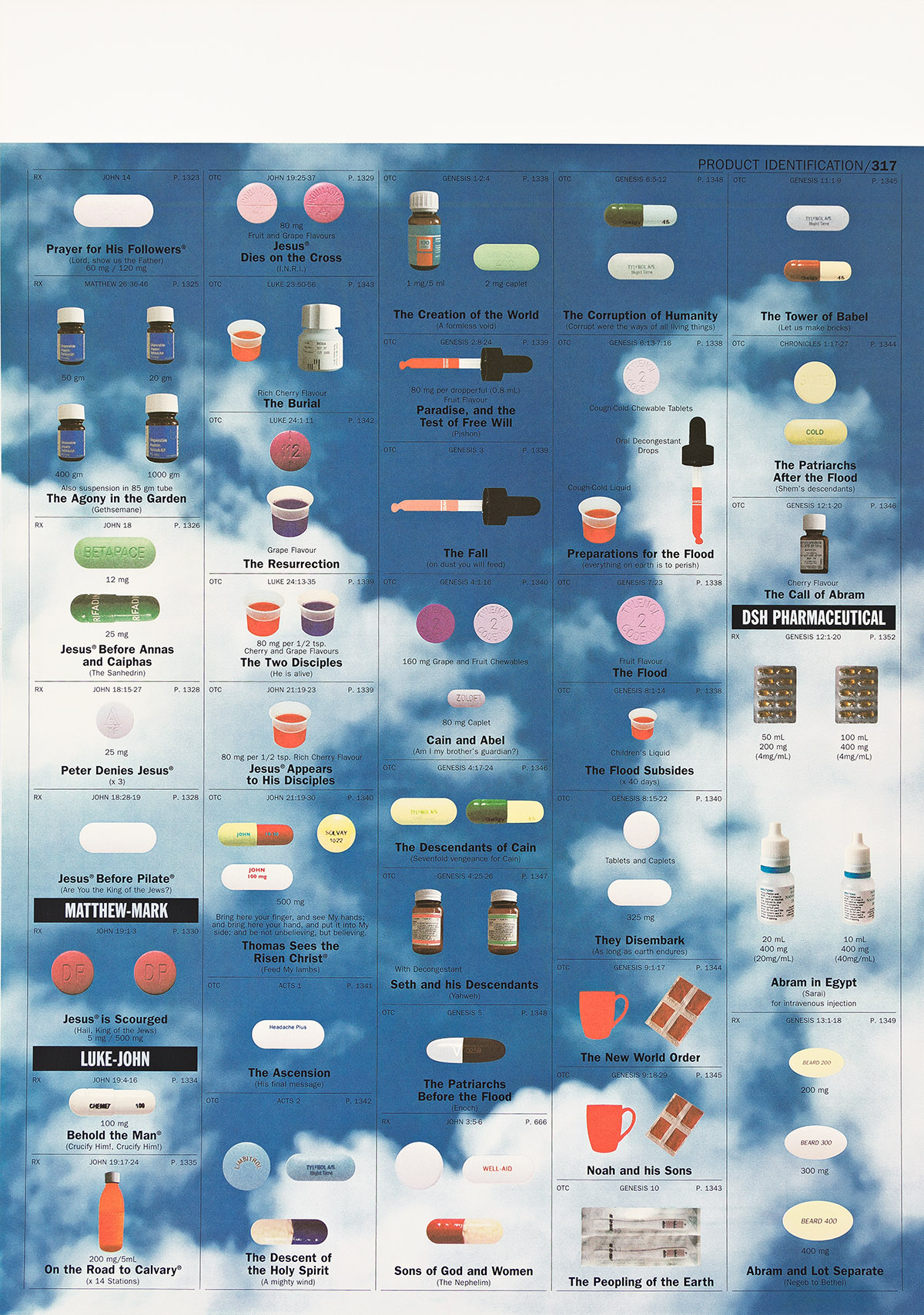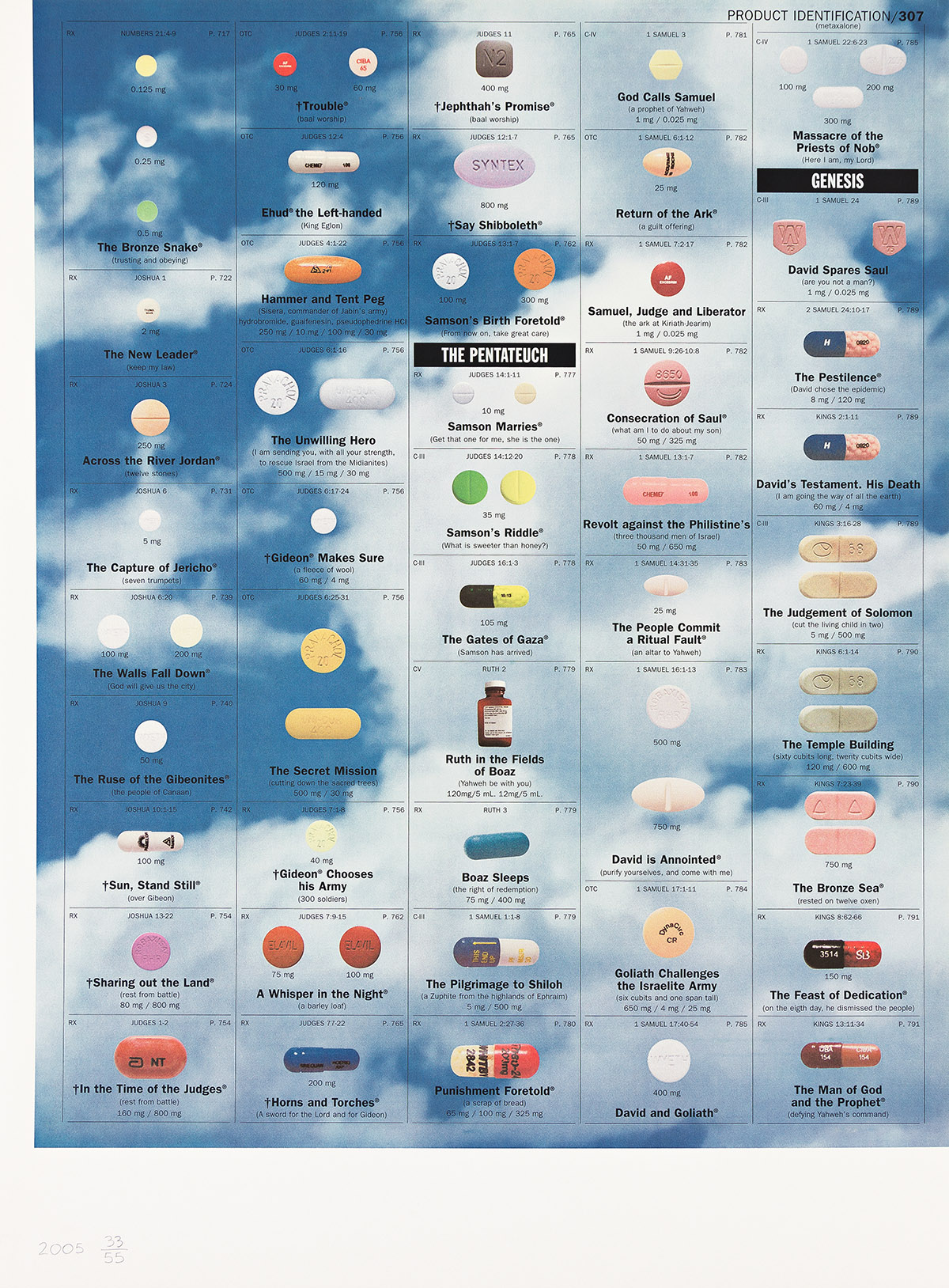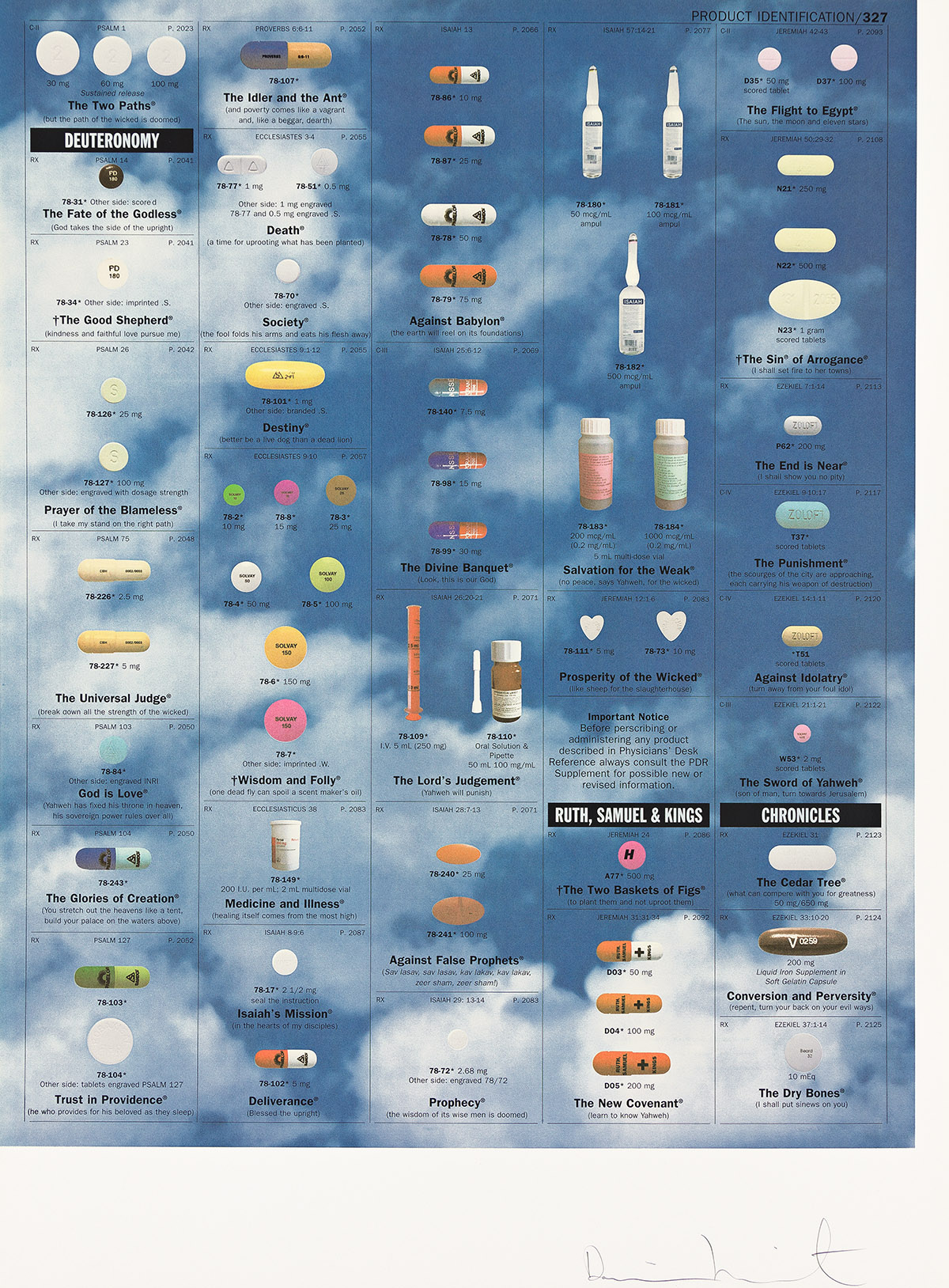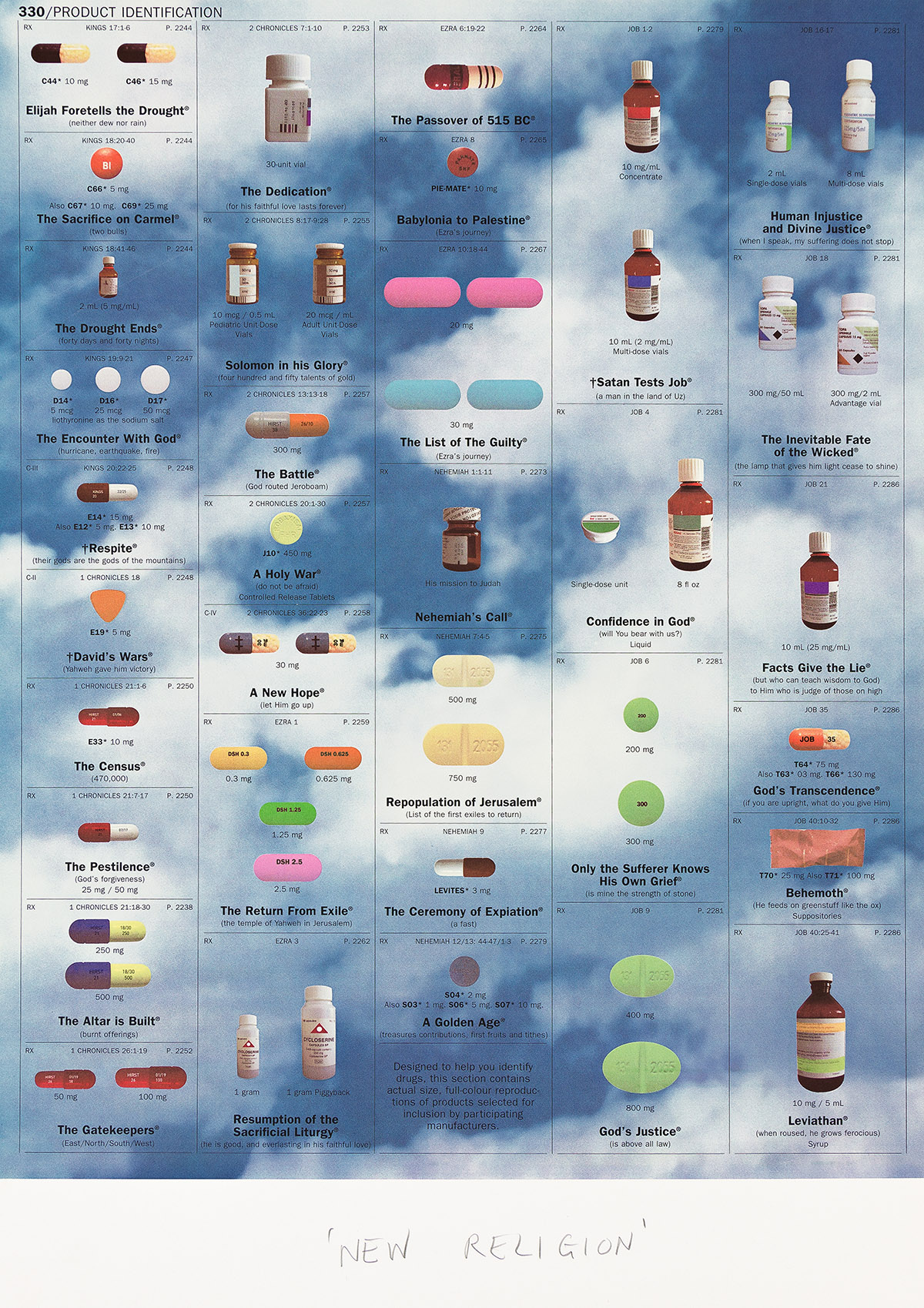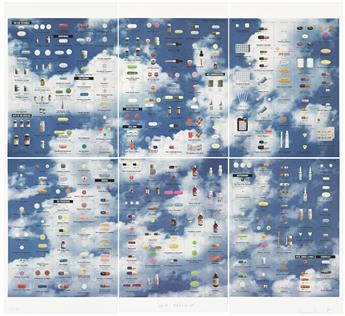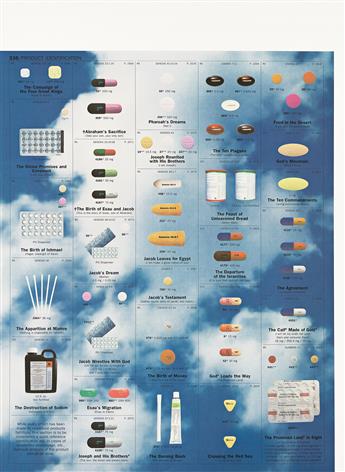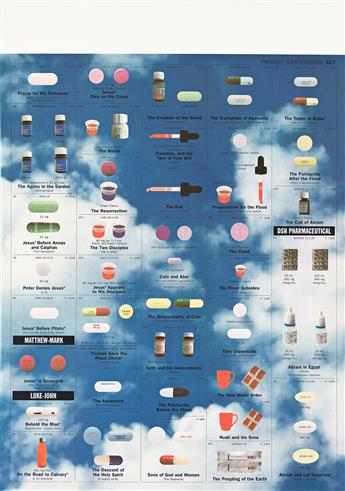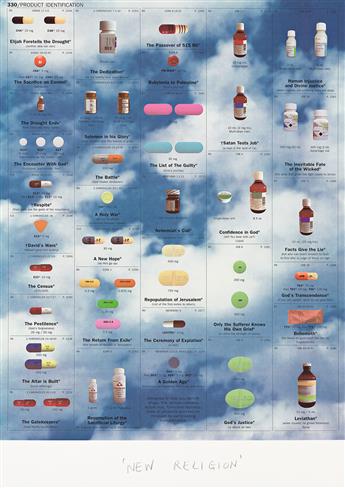Sale 2671 - Lot 303
Price Realized: $ 10,000
Price Realized: $ 12,500
?Final Price Realized includes Buyer’s Premium added to Hammer Price
Estimate: $ 12,000 - $ 18,000
DAMIEN HIRST
New Religion.
Group of 6 color screenprints on Somerset Satin paper, 2005. Each 997x661 mm; 39¼x26¼ inches (sheets), full margins. One signed in pencil, lower right; one dated and numbered 33/55 in pencil, lower left; and another titled in pencil, lower center. Co-published by Other Criteria and Paul Stolper Gallery, London. Very good impressions with strong colors.
According to the press release of this series, from the co-publishers, "Throughout the course of Damien Hirst's [born 1965] career, belief has been at the heart of his work. Early medicine cabinets such as God, 1989, pitched an unquestioning belief in scientific rationalism--the conviction that pills can cure you—against the more subjective belief in religion and the redemptive healing power of God. This equation gave form to Hirst's disappointment that a belief in art did not exist in a similar manner to the way that God or science might be unquestionably believed in. Without this belief in art, any sense of meaning is dissipated; it being through the artifice of art and its formal structures that the illusions of life can be recognised.
New Religion, Hirst's latest project, is grounded in belief and extends this outlook in new directions. The different elements that make up New Religion form a chapel dedicated to desire, a desire to keep mortality at bay but which can't help confront death at the same time. Belief in religion and medicine is grounded in this desire, confirmed here by its representation as art; where, for instance, The Holy Trinity is presented as a pie-chart that through logic attempts to prove the wholly unprovable.
The 44 silkscreen prints, and four sculptures that make up New Religion work like a fresco cycle—moving from the Creation of the World, through the Stations of the Cross and towards the Last Judgement—that surrounds an altarpiece holding a cedar cross studded with gem-like pills, a child's skull and a heart wrapped in barbed wire and pierced by needles and razor blades all cast in silver, and a large carved marble pill. Surrounding this tabletop votive display is the print cycle that confirms Hirst's vision as a marriage of the sacred to the profane. A doctor's medicine chart—seemingly rational in order and structured to a grid—becomes a new way of reading the Bible. The different stories of miracles and prophecies are not just pictured through the diverse properties of the medicines, they become the names of the drugs that are supposed to cure us. Printed on different backgrounds--silver, a congealed blood red and a bright sunny sky—the rational order of miraculous medicines seems by turns horrific, precious, gem-like and ethereal. Prints of individual pills further underline these themes while other prints of a skull and a butterfly suggest the suspension of life arrested in death. Belief—whether in religion, art or science—is a means of forming a buffer to the fragility and temporary nature of life and provides a way of living in the shadow of death from which it can ultimately offer no actual escape. Belief, like art, is--as Karl Marx recognised with religion—an illusion that shrouds, even postpones reality." As Hirst himself has stated (1991), "I can't understand why some people believe completely in medicine but not in art, without questioning either."
New Religion.
Group of 6 color screenprints on Somerset Satin paper, 2005. Each 997x661 mm; 39¼x26¼ inches (sheets), full margins. One signed in pencil, lower right; one dated and numbered 33/55 in pencil, lower left; and another titled in pencil, lower center. Co-published by Other Criteria and Paul Stolper Gallery, London. Very good impressions with strong colors.
According to the press release of this series, from the co-publishers, "Throughout the course of Damien Hirst's [born 1965] career, belief has been at the heart of his work. Early medicine cabinets such as God, 1989, pitched an unquestioning belief in scientific rationalism--the conviction that pills can cure you—against the more subjective belief in religion and the redemptive healing power of God. This equation gave form to Hirst's disappointment that a belief in art did not exist in a similar manner to the way that God or science might be unquestionably believed in. Without this belief in art, any sense of meaning is dissipated; it being through the artifice of art and its formal structures that the illusions of life can be recognised.
New Religion, Hirst's latest project, is grounded in belief and extends this outlook in new directions. The different elements that make up New Religion form a chapel dedicated to desire, a desire to keep mortality at bay but which can't help confront death at the same time. Belief in religion and medicine is grounded in this desire, confirmed here by its representation as art; where, for instance, The Holy Trinity is presented as a pie-chart that through logic attempts to prove the wholly unprovable.
The 44 silkscreen prints, and four sculptures that make up New Religion work like a fresco cycle—moving from the Creation of the World, through the Stations of the Cross and towards the Last Judgement—that surrounds an altarpiece holding a cedar cross studded with gem-like pills, a child's skull and a heart wrapped in barbed wire and pierced by needles and razor blades all cast in silver, and a large carved marble pill. Surrounding this tabletop votive display is the print cycle that confirms Hirst's vision as a marriage of the sacred to the profane. A doctor's medicine chart—seemingly rational in order and structured to a grid—becomes a new way of reading the Bible. The different stories of miracles and prophecies are not just pictured through the diverse properties of the medicines, they become the names of the drugs that are supposed to cure us. Printed on different backgrounds--silver, a congealed blood red and a bright sunny sky—the rational order of miraculous medicines seems by turns horrific, precious, gem-like and ethereal. Prints of individual pills further underline these themes while other prints of a skull and a butterfly suggest the suspension of life arrested in death. Belief—whether in religion, art or science—is a means of forming a buffer to the fragility and temporary nature of life and provides a way of living in the shadow of death from which it can ultimately offer no actual escape. Belief, like art, is--as Karl Marx recognised with religion—an illusion that shrouds, even postpones reality." As Hirst himself has stated (1991), "I can't understand why some people believe completely in medicine but not in art, without questioning either."
Exhibition Hours
Exhibition Hours
Aliquam vulputate ornare congue. Vestibulum maximus, libero in placerat faucibus, risus nisl molestie massa, ut maximus metus lectus vel lorem.





